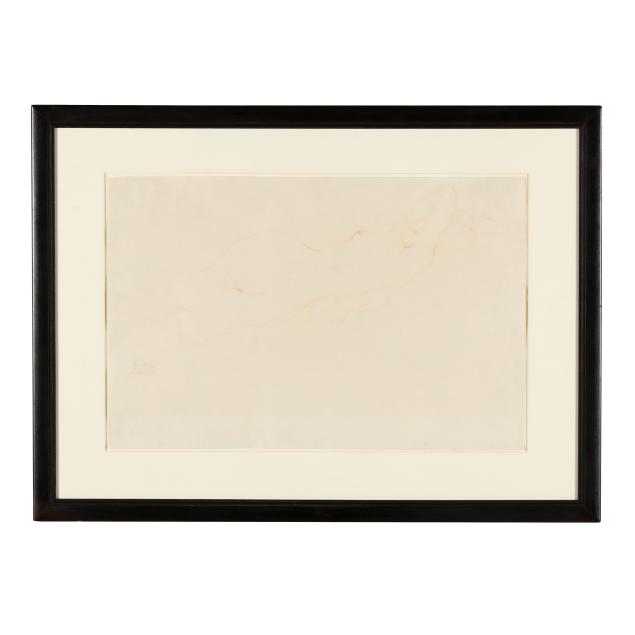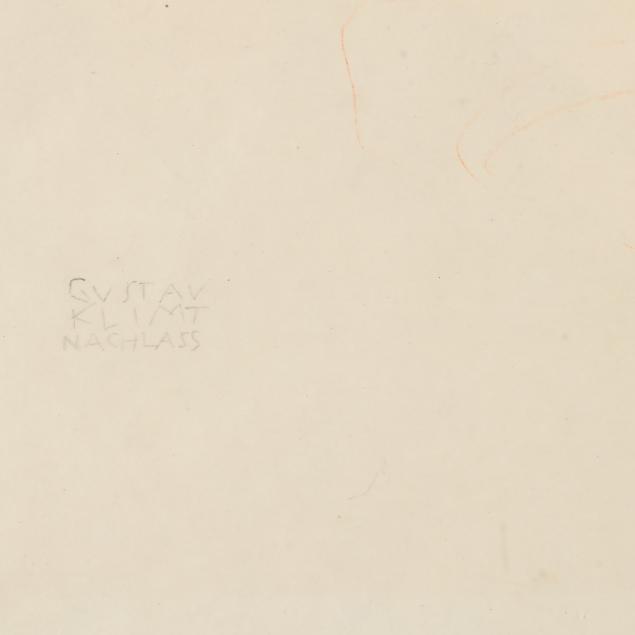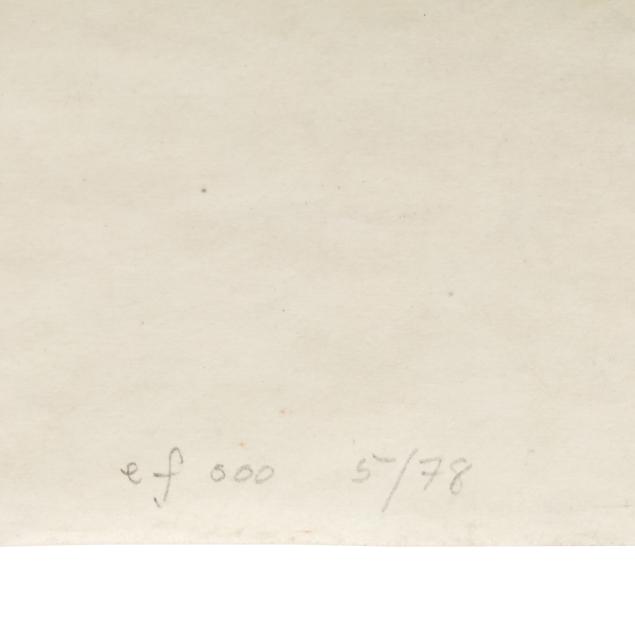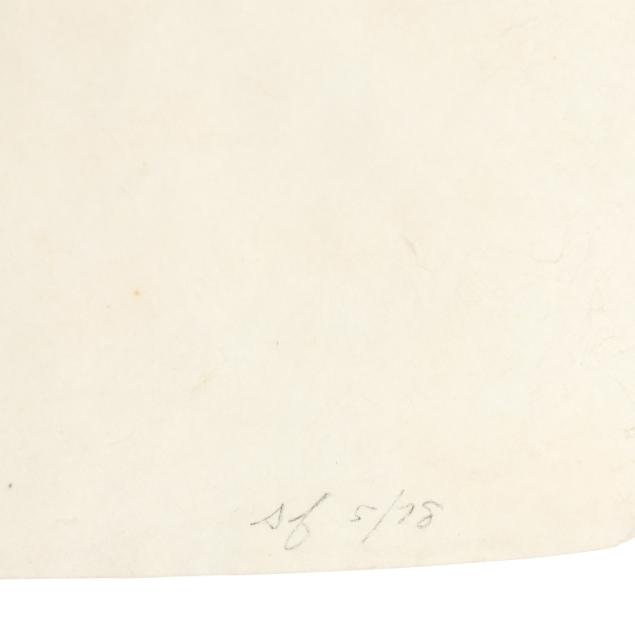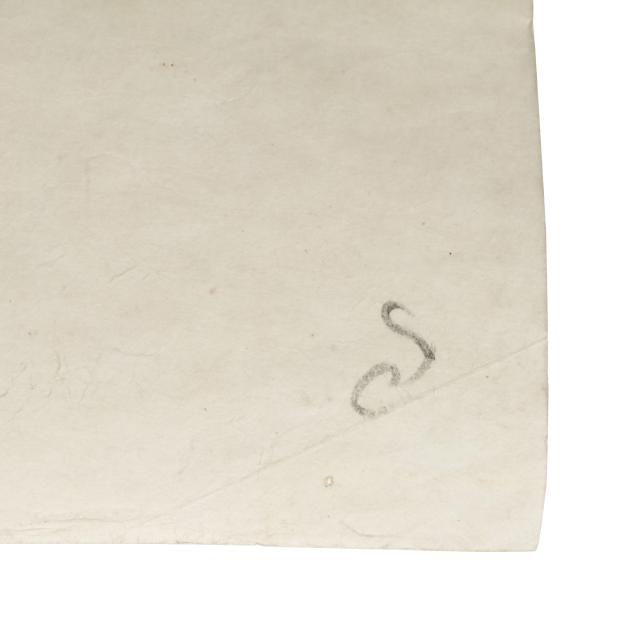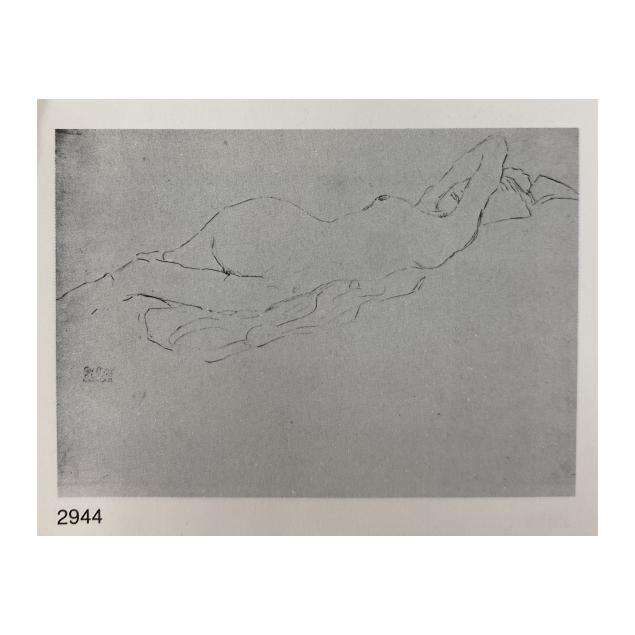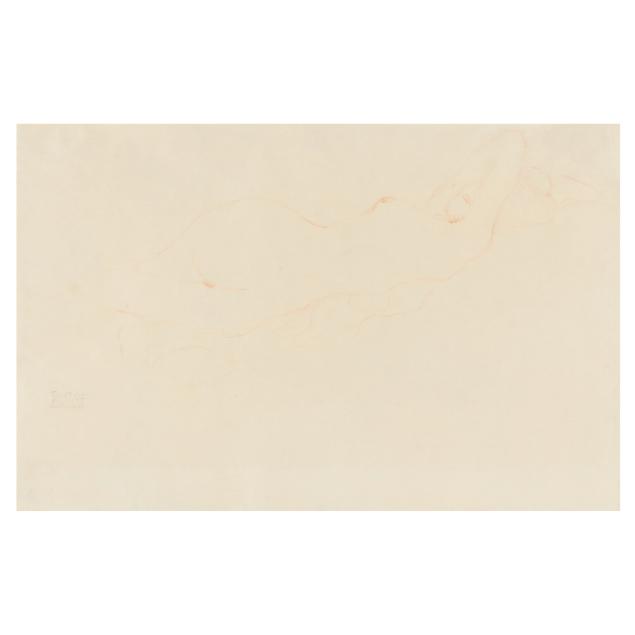
Lot 4064
Gustav Klimt (Austrian, 1862-1918), Liegender Akt nach rechts, das Gesicht mit dem Arm verdeckend
Explore more items like this one.
Visit our Fine Art Department Fine Art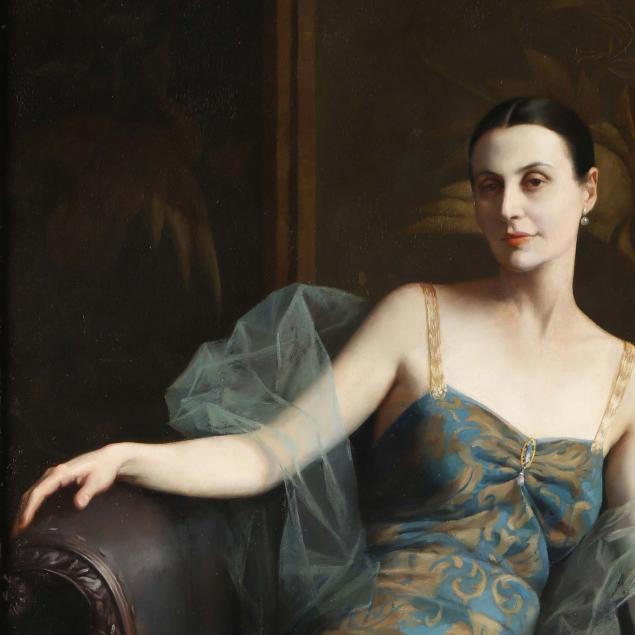
Lot Details & Additional Photographs
Sheet size 14 3/16 x 21 3/4 in. (360 x 552 mm); Frame dimensions 22 x 30 in.
Galerie St. Etienne, New York (circa 1983)
Private Collection, Virginia
Literature:
A. Strobl, Gustav Klimt, vol. III, Die Zeichnungen, Nachtag, 1912-1918, Salzburg, 1984, no. 2944, p. 200 (illustrated)
Gustav Klimt was an Austrian symbolist painter and one of the most prominent figures of the Vienna Secession movement. Born in Baumgarten, a suburb of Vienna, Klimt was the second of seven children in a modest household. He displayed exceptional artistic talent early on and trained at the Vienna School of Arts and Crafts, focusing on architectural painting. In his early career, Klimt worked on large-scale decorative projects, collaborating with his brother Ernst and friend Franz Matsch. Together, they produced murals and ceiling paintings in public buildings, such as theaters and museums, blending traditional techniques with emerging modernist ideas.
By the 1890s, Klimt began to break away from conventional academic art, embracing a more personal, symbolic style. This shift marked the beginning of his "Golden Phase," during which he employed gold leaf and intricate patterns in his works, inspired by Byzantine mosaics and Japanese art. Iconic pieces such as The Kiss (1907–1908) and Portrait of Adele Bloch-Bauer I (1907) exemplify this period, blending sensuality, ornamentation, and an exploration of themes like love, life, and death. Klimt was a founding member and first president of the Vienna Secession, an art movement aimed at breaking free from traditional constraints and embracing new artistic expressions.
Klimt's later works continued to evolve, incorporating more experimental approaches and influences from Impressionism and Symbolism. Despite controversy surrounding his provocative and often erotic subjects, his work gained widespread acclaim and left an indelible mark on modern art. Klimt died unexpectedly in 1918, during the influenza pandemic, leaving behind an unfinished legacy of over 230 works. His art remains celebrated for its bold innovation, rich symbolism, and profound exploration of human emotions and beauty.
Gustav Klimt was a prodigious and prolific draftsman. His drawings are celebrated for their expressive fluidity, intricate detail, and exploration of the human form. Primarily created in pencil or chalk, his drawings often served as preparatory studies for his paintings and decorative works, yet they stand as significant works of art in their own right. Klimt’s fascination with the human figure, especially the female form, is evident in his vast collection of sketches, which range from intimate, sensual portrayals to dynamic studies of movement and posture. These drawings reveal his ability to capture emotion and physicality with remarkable economy of line, often emphasizing contours and delicate shading. Klimt’s works on paper frequently explore themes of beauty, sexuality, and vulnerability, reflecting the psychological depth and symbolism that permeate his paintings. Today, his drawings are celebrated for their masterful draftsmanship and their contribution to the evolution of modern art.
Extreme fading to image; cockling and creasing to sheet.
